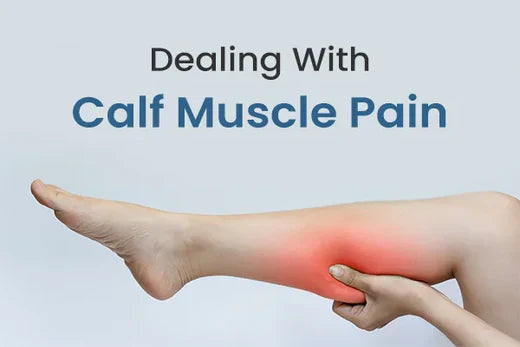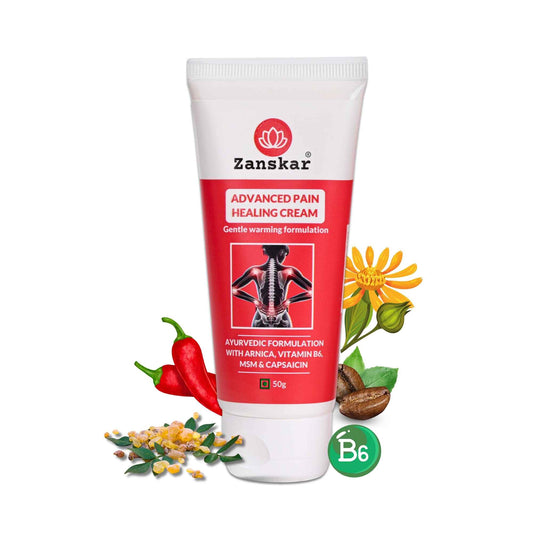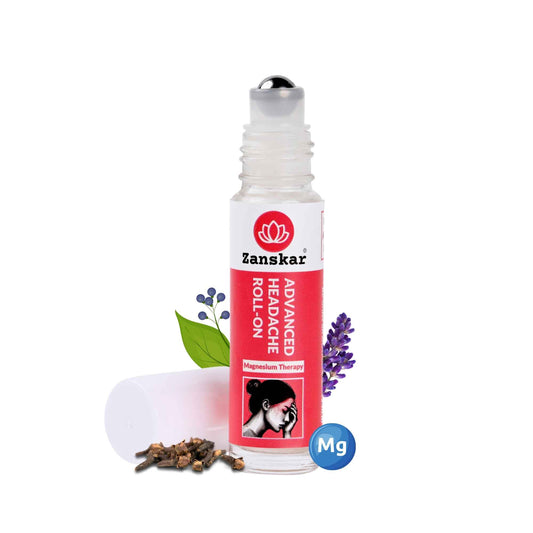
Physical Therapists’ Guide to Treating Calf Pain

If you’ve been on the move lately, you owe a lot to your calves. These powerful muscles in the back of your lower legs play a crucial role in walking, climbing stairs, running, and even sports. So, when calf pain strikes, it’s no surprise that everyday tasks can become more challenging. “Since the calves are essential for walking, that’s often where people first notice the discomfort,” explain experts at Zanskar Health.
Calf pain can arise from a variety of factors, including sudden injuries or overuse over time. While it can be disruptive and uncomfortable, recovery starts with understanding its causes and incorporating gentle exercises to support healing.
Keep reading to discover common causes of calf pain, treatment options, and expert-recommended exercises from Zanskar Health specialists to help you get moving again.
Symptoms of Calf Pain
Calf pain symptoms can vary, but the most common ones include:
- Sharp, dull, or aching pain in the back of your lower legs
- Calf discomfort that gets worse with walking
- Difficulty performing activities involving your calves, like walking, running, standing for long periods, jumping, or rising onto your toes
- Calf tenderness and swelling
- Stiffness
- Visible bruising

In many cases, these symptoms resolve over time on their own with conservative home treatments, including exercise.
Common Causes of Calf Pain
Given how much you rely on your calves for daily activities, there are several reasons you might experience discomfort in this area. Here are some typical causes:
- Calf Contusion: A contusion, or bruise, happens when your calf sustains a direct impact, such as being hit during sports, falling on your leg, or accidentally bumping into furniture. Along with bruising, you may notice swelling in the area.
- Cramping: Calf muscles can cramp just like any other muscle. “Muscle fibers are designed to contract and relax, but cramping occurs when they get stuck in between,” say experts at Zanskar Health. Cramping may result from muscle overuse, dehydration, or other factors.
- Muscle Strain: A calf strain occurs when the muscle is overstretched, leading to small tears. This can cause pain and make it difficult to use the affected leg.
- Achilles Tendonitis: The Achilles tendon, which connects the calf muscle to the heel bone, can become inflamed or irritated from repetitive use. This often happens when someone goes from inactivity to a sudden increase in physical activity.
How to Prevent Calf Pain
While you can’t always avoid calf pain, making small changes to your routine can greatly lower the risk of injuries and recurring discomfort.
- Ease Into Movement: When starting a new workout or returning after a break, take it slow. Begin with lighter intensity or shorter sessions to let your body adjust. Pay attention to your calves and avoid pushing through pain. Rapidly increasing reps, distance, or duration can heighten the risk of strains or cramps.
- Warm Up First: Prepare your calves before activity with dynamic stretches to enhance flexibility and reduce injury risk. Proper warm-ups not only prevent pain but also improve overall performance.
- Stay Hydrated: Dehydration can lead to calf cramping. Make sure you drink enough water and include electrolytes in your diet to support muscle function. For longer workouts or intense physical activity, consider electrolyte-rich drinks or snacks to keep your calves happy.
- Choose Proper Footwear: Supportive shoes with good arch support and cushioning can reduce strain on your calves. Avoid worn-out or unsupportive footwear, as they can force your calves to work harder, increasing the chance of pain.
- Try Compression Socks: Compression socks can help if you’re on your feet often or experience calf swelling. They improve circulation, prevent fluid buildup, and reduce swelling, making them a practical tool for pain relief and prevention.
Calf Pain Treatment Options
Your body is naturally resilient, and most calf pain resolves on its own with time. However, these treatment options, recommended by Zanskar Health experts, can support your recovery and accelerate healing:
1. Physical Therapy: Consulting a physical therapist can be transformative for managing calf pain. A therapist will assess the causes of your discomfort and guide you through targeted exercises to relieve pain without worsening it. As your strength improves, they’ll introduce progressively challenging movements to ensure lasting recovery and prevent future injuries. Consider downloading the Zanskar app for free calf pain exercise program you can easily follow at home.
2. Gentle Activity: Consistent, gentle movement helps improve blood flow, strengthen muscles, and promote healing. Daily walks are an excellent choice to reduce swelling and stiffness. Low-impact activities like cycling or yoga can also be beneficial if they feel comfortable for you.
3. Ice Therapy: Cold therapy can help reduce swelling and inflammation, particularly in the early stages of calf pain. Apply an ice pack to your calf for 10–20 minutes or roll a frozen water bottle along the back of your lower leg for relief.
4. Heat Therapy: Heat improves blood flow to your calf, making it effective for easing cramping or stiffness. Use a heating pad or warm compress in short sessions to relax muscles and alleviate discomfort.
5. Over-the-Counter Medication: Pain relievers like ibuprofen or acetaminophen (if prescribed by your doctor) can provide temporary relief. To avoid the side effects associated with their long term use, you can also consider Zanskar's bio-active natural muscle pain relief products.
Tip: Warm Up Before Your Workout
Strain is a leading cause of calf pain or injury, often happening when muscles are overworked or stretched beyond their limits. To lower your risk, make warming up a priority before activities that stress your lower body. “Even basic movements like calf raises can effectively activate your muscles and prepare them for action,” advise experts at Zanskar Health.
Learn More About Zanskar Health
If you have joint or muscle pain that makes it hard to move, Zanskar offers the most advanced full stack pain relief solutions for you.
Now available to purchase, Zanskar® Advanced Pain Care Products have a unique formulation of natural bioactive ingredients and provide lasting relief from muscle and joint discomfort that you can feel good about. Get your fix before stocks run out - buy now.
You can also gain access to therapeutic exercises and stretches for your condition by downloading the Zanskar Health physiotherapy mobile app. Additionally, you’ll have a personal care team to guide, support, and tailor our program to you, including behavioral and nutritional coaching.
Download our mobile app here 👉 download and track your exercise streak.
Medical Review: This article is written by Dr Nishtha Mittal (Senior Health Content Editor at Zanskar Health) and has been medically reviewed by the medical team at Zanskar Health. This article and its contents are provided for educational and informational purposes only and do not constitute medical advice or professional services specific to you or your medical condition.







